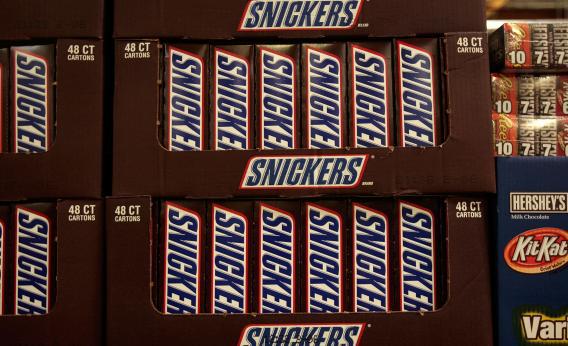Despite all the recent handwringing (even pearl clutching) over junk food in schools, a study out this month in the quarterly Sociology of Education found no link between student obesity rates and the school-wide sale of candy, chips, or sugary soda. The finding undermines efforts by policy makers to trim kids’ waistlines by banning snacks from the classroom. And it must taste odd to the many doctors and scientists who see vending machines as accessories in the childhood obesity epidemic.
The study followed 19,450 fifth graders of both sexes for four years. At the beginning, 59 percent of the students went to schools that sold “competitive foods”—that is, non-cafeteria fare not reimbursable through federal meal programs. CFs tend to have higher sugar or fat content and lower nutritional value (think the indulgences at the top of the food pyramid, like Coke and Oreos). By the time the students reached eighth grade, 86 percent of them attended schools that sold competitive foods. The researchers, led by Pennsylvania State University’s Jennifer Van Hook, then compared body mass indexes from the 19,450 students, including those who’d spent all four years in junk food-free environments, those who’d left such schools for vending machine-friendly ones, those who’d transferred from vending machine-friendly schools to junk food-free schools, and those who enjoyed access to vending machines for all four years. Regardless of which data sets they contrasted, the researchers were unable to find any sort of connection between obesity and the availability of “unhealthy” snacks in school. In other words, children who could theoretically grab a Snickers bar after class every day for four years were, on average, no heavier than those who couldn’t.
While Van Hook speculated to the New York Times that the findings reflect our tendency to “establish food preferences… early in life,” she also noted in her paper that middle schoolers’ regimented schedules could prevent them from doing much unsupervised eating. (I guess that means that the students didn’t have time to utilize the junk food options they had, which is an issue for another day). In any case, the takeaway is clear. You can’t solve childhood obesity by outlawing vending machines. The obesity epidemic (if it is one) depends on a complex interplay of genetic, environmental, and behavioral factors. Maybe a full-court press of school regulations plus zoning laws that encourage supermarkets to come to poor neighborhoods plus government subsidies for fruits and veggies plus crackdowns on fast food advertising plus fifty other adjustments would begin to make a dent in the problem. (Maybe a saner cultural attitude towards food, weight, and looks in general would also help).
And though I fully support a push for healthier lifestyles, I wonder whether the body mass index is the right yardstick to use. I’d be fascinated to know, for instance, if any correlations existed between students’ cholesterol levels and the availability of competitive foods at their schools, or if kids from vending machine-free schools performed better on fitness tests. These questions make more sense to me than the obsession over precise modulations in body size.
But what do you think? Let us know in the comments.
